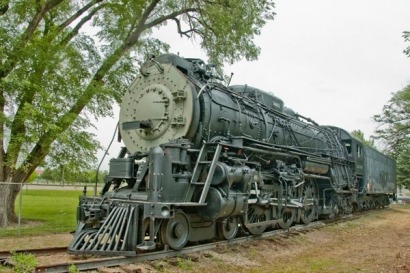
CSR has drawn on the carbon-neutral solid biofuel research expertise of the University of Minnesota and the modern steam mechanical engineering capabilities of SRI to develop what it describes as “the most powerful carbon-neutral locomotive to date”.
CSR Project 130 has a simple goal: create the world’s cleanest, most powerful passenger locomotive, proving the viability of solid biofuel and modern steam locomotive technology. The Coalition will put its technology to the test by planning to break the world record for steam locomotive speed, reaching 130 miles per hour and demonstrating the viability of this revolutionary, clean transportation technology.
Biocoal to power locomotive
The locomotive will run on torrefied biomass (biocoal), a biofuel created through an energy-efficient processing of cellulosic biomass. Biocoal exhibits the same energy density and material handling properties as coal, but unlike coal, it is carbon neutral, contains no heavy metals, and produces less ash, smoke and volatile off-gases. Since it exhibits such similar characteristics to coal, biocoal has the potential to revolutionize the way the United States generates clean electricity.
“Participation in the Coalition for Sustainable Rail has enabled our team to pursue one of the more exciting and potentially ground-breaking research projects in the history of IonE,” explains Rod Larkins, Special Projects Director of IonE’s Initiative for Renewable Energy and the Environment. “Once perfected, creating the world’s first carbon-neutral locomotive will be just the beginning for this technology which, we hope, will later be used for combined heat and power energy in the developing world as well as reducing the United States’ dependence on fossil fuels.”
Preliminary research shows that CSR’s test locomotive will cost less to maintain and less to fuel, and will exhibit greater train handling performance than any diesel-electric locomotives available today. The modern steam locomotive has relied on technology that has been neglected for decades. This is about to change. With the ability to burn biocoal efficiently and without negative impact on the environment, CSR’s modern steam locomotive will also exhibit significantly better horsepower output at higher speeds than the current diesel-electric locomotives that pull the majority of passenger trains in the United States.
“This project presents a novel approach to US locomotive development, looking to technologies of the past to inspire solutions for today’s sustainability challenges,” comments SRI President Davidson Ward, a 2010 graduate of the School of Architecture in the College of Design at the University of Minnesota, Twin Cities. “I’m confident that the leading energy researchers we’re working with at the University of Minnesota, along with our team of engineers, will be able to bring this technology to the forefront of America’s energy and transportation conversations.”
In November 2011, SRI acquired a large test bed steam locomotive through a transfer of ownership from the Great Overland Station Museum in Topeka, Kan. This locomotive, built in 1937 for the Atchison, Topeka and Santa Fe Railroad, will be reconfigured by SRI’s locomotive modernization experts, then tested as part of CSR Project 130.
The success of CSR Project 130 has implications that extend beyond the railroad industry, proving the viability of biocoal for use in the developing world. Locomotive engineering on combustion and boiler technologies allows CSR to design power boilers and electric generators on scales from 5 to 5,000 kilowatts. This technology is adaptable for homes in villages of the developing world as well as for use in the US. Every dollar spent on engineering support of CSR Project 130 can generate up to three times the benefit in outgrowth technologies to solve energy problems in the United States and around the world.
“When I think of the University of Minnesota’s motto, ‘Driven to Discover’ it is precisely the kind of research-based innovation present in CSR Project 130 that sets our school apart,” says Don Fosnacht, Ph.D., Centre Director at the Natural Resources Research Institute, University of Minnesota, Duluth. “The idea of integrating cutting-edge materials science and engineering into a technology base that has not been touched since the 1960s is quite unique, and entering into an industry with as much potential for growth as the US railroad market just adds to CSR Project 130’s impact.”
In May, SRI completed a cosmetic restoration and stabilisation of Locomotive 3463 in Topeka. Plans are to move the locomotive to Minneapolis within the next 12 months. Once moved, CSR will complete the detailed engineering needed to modernize and reconfigure the locomotive.
For additional information:

